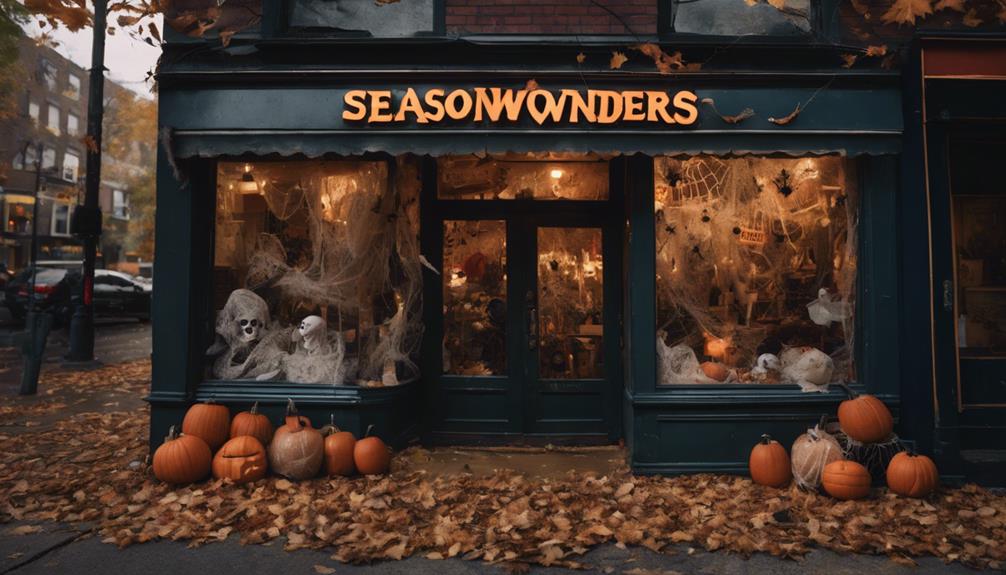Halloween stores thrive by capitalizing on a unique business model that leverages temporary leases, efficient supply chain management, and targeted marketing strategies to capture a significant share of the lucrative Halloween market. They occupy vacant retail spaces on short-term leases, focusing on costumes and decorations to meet seasonal demand. By orchestrating global supply chains and employing clever marketing tactics, retailers maximize sales potential. As the Halloween season approaches, retailers shift focus to themed displays, social media engagement, and collaborations to drive consumer interest. There's more to uncover about the intricacies of this seasonal Retail phenomenon.
Key Takeaways
• Halloween retailers operate on temporary leases, typically 6-8 weeks, in vacant retail spaces to capitalize on seasonal demand.
• They orchestrate global supply chains to source costumes and decorations, managing inventory levels to meet high demand.
• Effective marketing strategies, including themed displays, social media, collaborations, and email campaigns, drive consumer engagement and sales.
• Stores focus on capturing a significant share of Halloween spending by offering a wide range of costumes and decorations.
• By operating for a limited time, typically from early August to early November, retailers maximize sales potential during the high-demand Halloween season.
The Business Model Behind Halloween Stores
How do seasonal retailers like Spirit Halloween capitalize on the fleeting Halloween season, turning a profit in just a few short weeks?
The answer lies in their innovative business model. Halloween retailers thrive on the concept of pop-up stores, occupying vacant retail spaces on temporary leases that last only 6-8 weeks.
This approach allows them to benefit from the rise in strip-mall vacancies, often a result of bankruptcies and closures of big-box retailers. By focusing on costumes and decorations, these retailers capture a significant share of Halloween spending in the US.
Their business model is designed to capitalize on the seasonal demand, offering convenience to last-minute shoppers with extended hours and quick access to key accessories.
The result is a profitable venture that disappears as quickly as it appears, vacating the retail space by November 15 each year.
How Temporary Leases Work
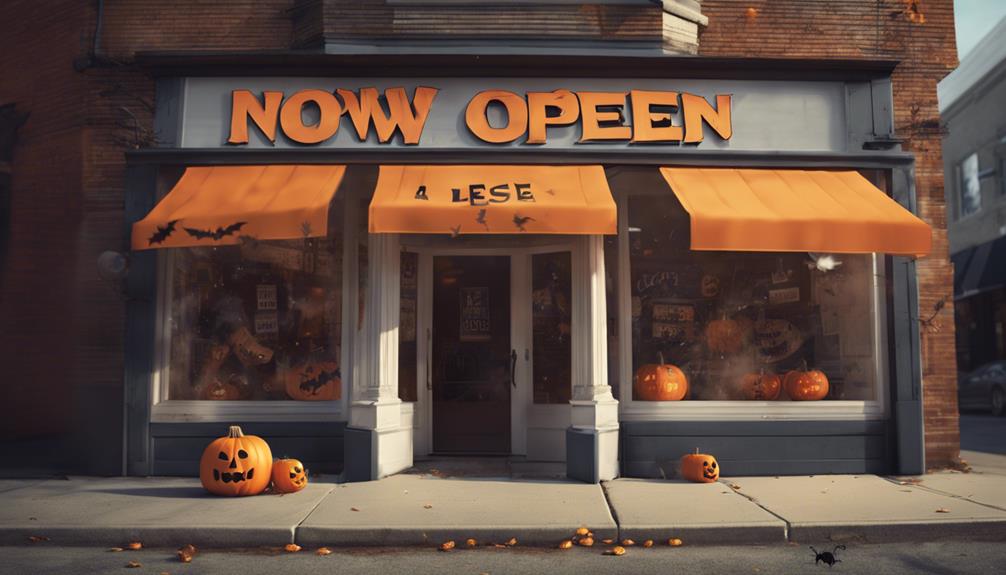
By securing temporary leases that last only 6-8 weeks, Halloween retailers like Spirit Halloween capitalize on vacant retail spaces. They often pay higher rent than long-term tenants due to the short duration of their occupancy. These temporary leases enable Spirit Halloween stores to pop up in high-demand areas, meeting the seasonal surge in demand for Halloween merchandise.
Real estate owners, enthusiastic to maximize their properties' potential, welcome these short-term occupants. Between mid-June and early August, leases are secured, and by November 15, the stores vacate, making way for other seasonal businesses. The temporary nature of these leases means that Halloween stores pay a premium for the short-term occupancy, a cost they're willing to bear to capitalize on the lucrative Halloween market.
In recent years, finding suitable locations has become more challenging, particularly in high-demand areas, as the economy has improved. Despite these challenges, Spirit Halloween and similar retailers continue to thrive, relying on their ability to secure temporary leases in vacant retail spaces.
Supply Chain and Logistics Secrets

Spirit Halloween and similar retailers orchestrate complex global supply chains to source millions of costumes, props, and decorations, ensuring timely inventory replenishment to meet the seasonal surge in demand. Efficient supply chain management is vital for Halloween retailers like Spirit Halloween to guarantee timely inventory replenishment.
Seasonal demand for Halloween products greatly impacts supply chain logistics, necessitating strategic planning and coordination to avoid stock shortages. Global supply chain disruptions can affect Halloween inventory availability, leading to potential stock shortages. To mitigate this risk, Halloween retailers must effectively manage inventory levels to meet customer demand during the short operating season.
Marketing Strategies for Success
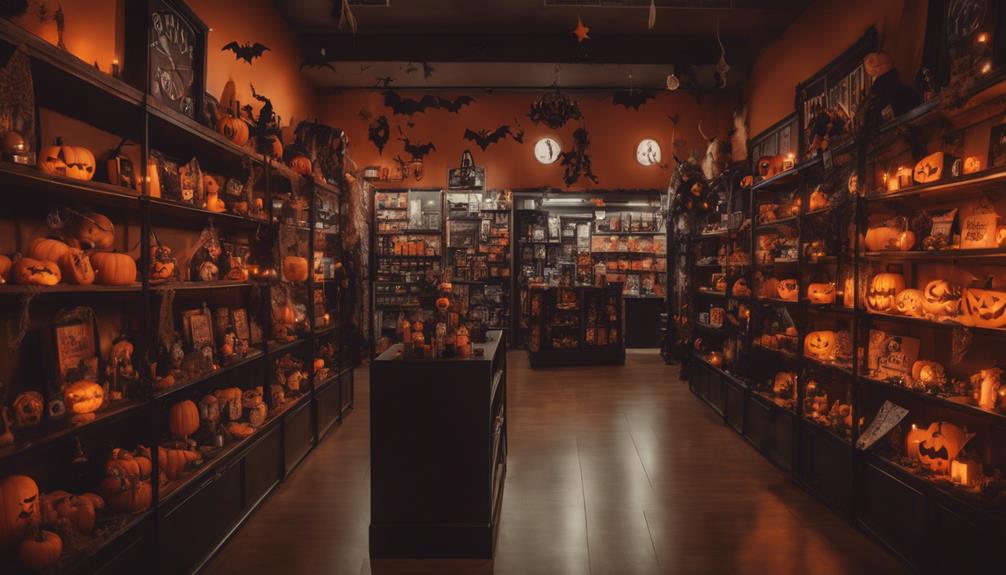
As the Halloween season approaches, retailers like Spirit Halloween shift their focus from logistical orchestration to clever marketing strategies that captivate their target audience.
To attract customers, Spirit Halloween and similar stores employ creative marketing strategies, such as themed displays and interactive experiences that create an immersive atmosphere. Social media plays an essential role, with engaging content and promotions driving consumer engagement.
Collaborations with popular brands, influencers, and media outlets help increase brand visibility and reach a larger audience. Email marketing campaigns with exclusive discounts and promotions are used to retain customers and drive sales.
The Rise of Seasonal Retailers
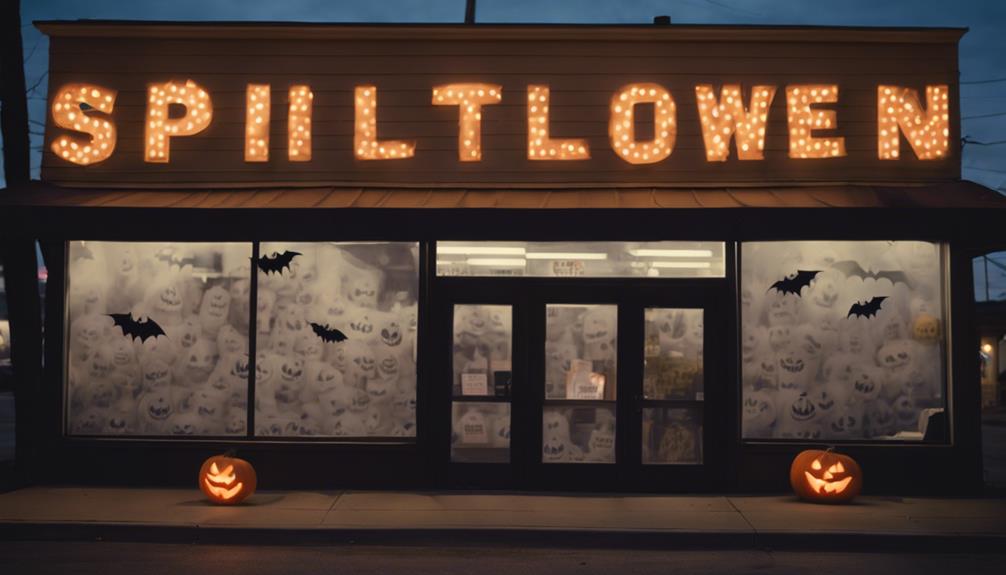
Capitalizing on the lucrative potential of holiday seasons, seasonal retailers like Halloween stores have emerged as a prominent force in the retail landscape. These stores operate for a limited time, typically from early August to early November, and capitalize on high-demand holiday seasons like Halloween to generate a significant portion of their annual revenue.
The rise of seasonal retailers reflects a trend in consumer behavior towards more focused and time-limited shopping experiences. Halloween stores such as Spirit Halloween and Halloween Express strategically utilize temporary leases for their pop-up locations, securing prime retail spaces to create an immersive retail experience.
Seasonal retailers often target specific holidays, events, or seasons to maximize their sales potential within a short timeframe. Here are three key aspects of their strategy:
- Temporary leases: Seasonal retailers secure temporary leases to minimize long-term commitments and maximize flexibility.
- Focused marketing: They concentrate their marketing efforts on specific holidays or events to create a sense of urgency and drive sales.
- Seasonal employees: They hire seasonal employees to manage the increased demand during peak holiday seasons.
Capitalizing on Holiday Demand
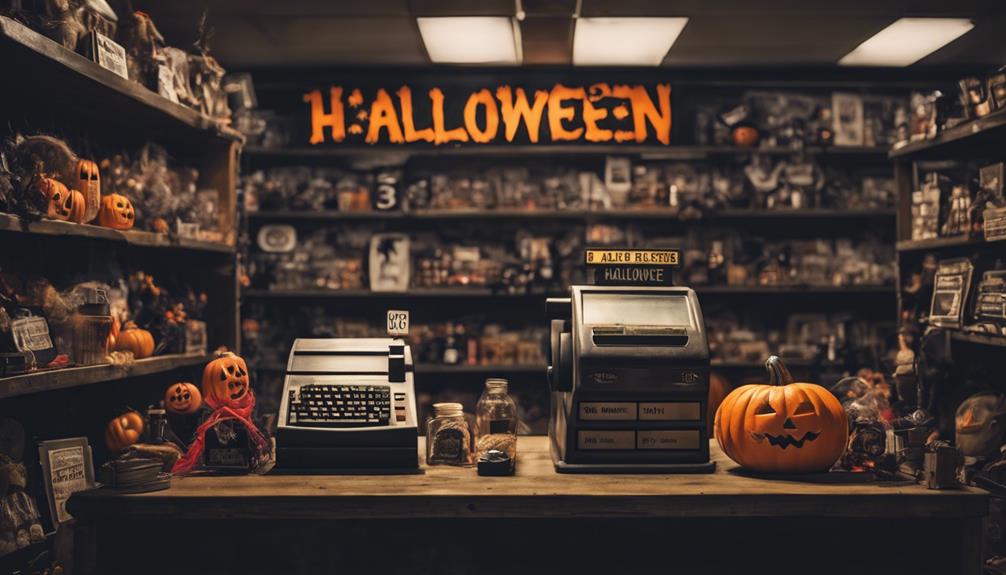
Halloween stores employ a seasonal business strategy, leveraging the high demand for Halloween-themed items to drive sales and maximize profitability during the peak shopping period.
By setting up temporary storefronts in vacant retail spaces, these stores capitalize on the festive atmosphere and create a sense of urgency around their limited-time offerings.
This strategic approach enables them to capitalize on the holiday demand and generate significant revenue during the Halloween season.
Seasonal Business Strategy
By concentrating their operations on a limited timeframe, seasonal retailers like Halloween stores expertly capitalize on the brief but intense period of high demand surrounding the spooky season. This seasonal business strategy allows them to maximize sales while minimizing operational costs. By focusing on holiday-specific offerings, they create a sense of urgency and exclusivity for shoppers, who are keen to capitalize on the festive season.
Halloween stores adapt quickly to changing trends and consumer preferences during the festive season, ensuring they remain relevant and appealing to their target audience. This approach enables them to:
- Cater to the temporary surge in consumer interest for costumes, decorations, and party supplies.
- Strategically open for a limited time to maximize sales and minimize operational costs.
- Offer exclusive and limited-time products, creating a sense of FOMO (fear of missing out) among consumers.
Temporary Storefronts
As the seasonal rush approaches, temporary storefronts spring to life, transforming vacant retail spaces into vibrant hubs of Halloween activity. These temporary storefronts, often referred to as pop-up stores, capitalize on the holiday demand by securing short-term leases, typically lasting 6-8 weeks, in vacant retail spaces.
Strategically choosing locations based on previous performance, visibility, and traffic count, Halloween stores cater to last-minute shoppers by providing convenience and quick access to costumes and accessories. The business model of Halloween stores thrives on finding and utilizing abandoned or vacant retail properties for short-term occupancy.
Frequently Asked Questions
How Do Pop-Up Halloween Stores Work?
Pop-up Halloween stores work by securing short-term leases in vacant retail properties, typically lasting 6-8 weeks. They capitalize on the rise in vacant real estate, especially due to retail closures.
What Do Halloween Stores Do After Halloween?
After Halloween, stores quickly close and dismantle, packing up inventory for next season. Some extend operations for clearance sales, discounting remaining items. Unsold inventory is efficiently packed and stored for the following year.
Stores focus on efficient storage to minimize waste and maximize resources. This process allows them to be ready for the next Halloween season, ensuring a smooth shift and minimizing downtime.
Where Do Halloween Stores Come From?
Halloween stores, like Spirit Halloween, originate from the concept of pop-up retail, occupying vacant retail spaces temporarily. They secure short-term leases from January to August to set up for the Halloween season.
Often, these stores fill the void left by failed retailers and utilize abandoned buildings for their seasonal operations.
Why Does Spirit Halloween Use Abandoned Stores?
Spirit Halloween uses abandoned stores because it capitalizes on vacant retail spaces left by failed businesses. By setting up in abandoned buildings, the company fills a void in the market for seasonal Halloween retail.
This business model thrives on the availability of abandoned spaces for temporary leases, allowing Spirit Halloween to occupy large spaces ranging from 5,000 to 50,000 square feet.
Conclusion
As the last customer exits the store on November 1st, the Halloween store's lights dim, and the shelves are stripped bare. It's a fleeting existence, like a jack-o'-lantern's glow, bright for a moment, then extinguished.
But, behind the scenes, a well-oiled machine is already gearing up for next year's spooky spectacle. From securing temporary leases to orchestrating a complex supply chain, these retailers have mastered the art of capitalizing on holiday demand, leaving a lasting impact on the retail landscape.
